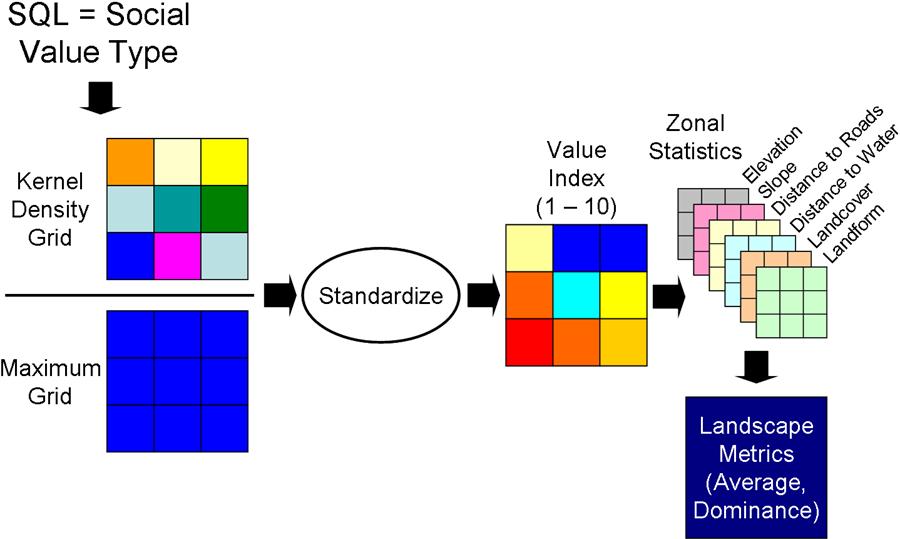| <Aesthetic | Biodiversity | Cultural | Economic | Future | Historic | Intrinsic | Learning | Life_Sustaining | Recreation | Spiritual | Therapeutic> |
Select the desired social value type from the dropdown list.
- Aesthetic: Scenery, sights, sounds, smells, etc.
- Biodiversity: Variety of fish, wildlife, plant life, etc.
- Cultural: Places to continue and pass down the wisdom and knowledge, traditions, and ancestral way of life.
- Economic: Provide timber, fisheries, minerals, and/or tourism opportunites such as outfitting and guiding.
- Future: Allow future generations to know and experience the area as it is now.
- Historic: Places and things of natural and human history that matter personally, to others, or the nation.
- Intrinsic: Value in and of itself, whether people are present or not.
- Learning: Opportunities to learn about the environment through scientific observation or experimentation.
- Life Sustaining: Produce, preserve, clean, and renew air, soil, and water.
- Recreation: Places for favorite outdoor recreation activities.
- Spiritual: Sacred, religious, or spiritually special place or inspiring feelings of reverence and respect for nature.
- Therapeutic: Improve physical and/or mental well-being.
|
